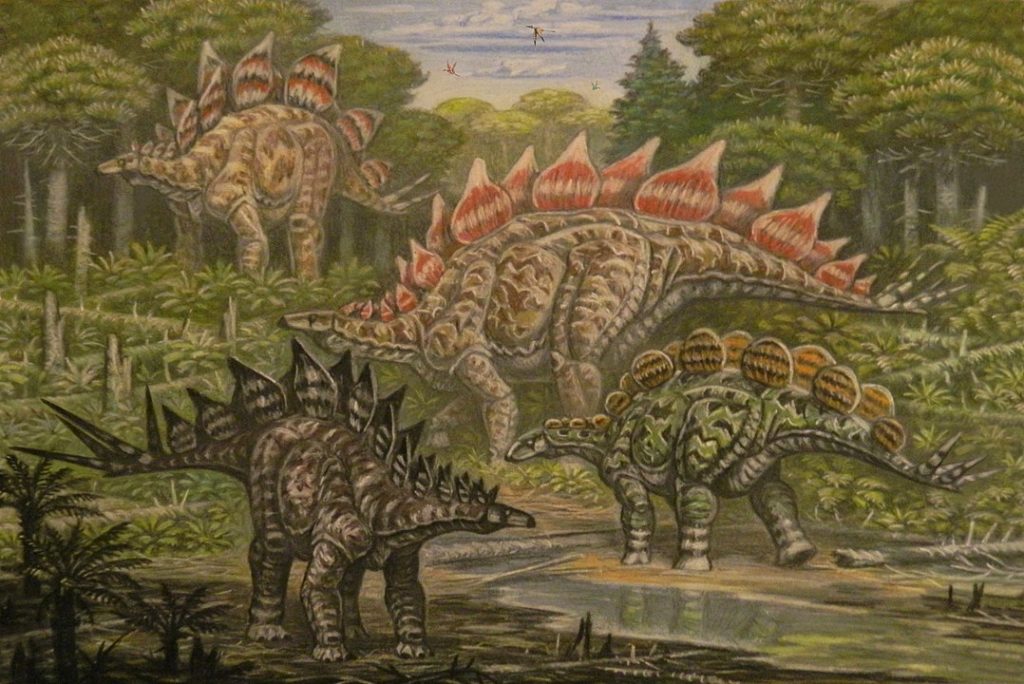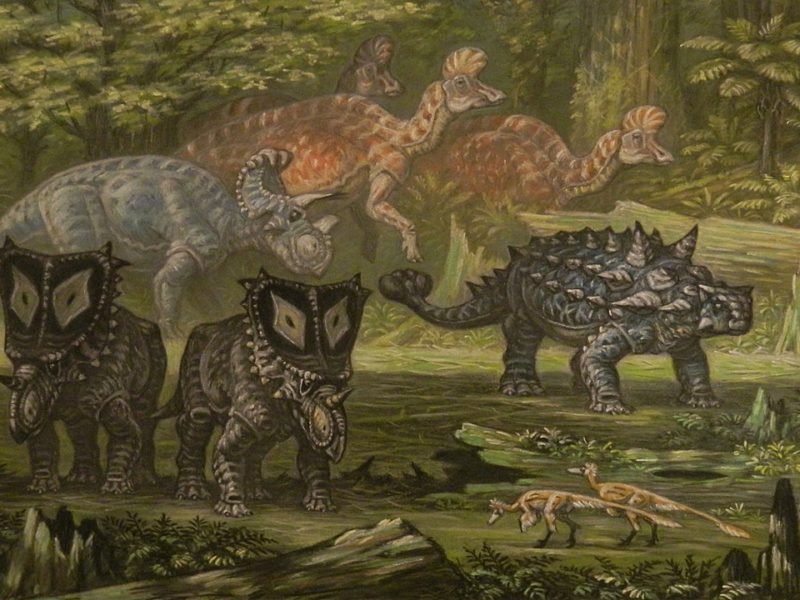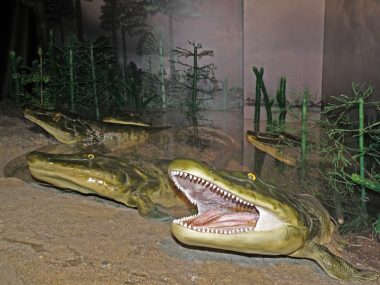Dinosaurs came in all shapes and sizes. Some, like the long-necked Alamosaurus, were lumbering behemoths that weighed over 70 tons. The feathered, turkey-sized raptor Dineobellator would have scampered about underfoot. Others, like Oryctodromeus, were burrowers and spent much time underground. Yi qi and others like it clambered about in the treetops, even gliding from tree to tree when necessary. Spinosaurus and Halskaraptor even laid claims to the waterways. All in all, paleontologists believe that we have discovered more than 700 species of dinosaurs. And they’re still digging up new ones!
The following is a summary of “The Dinosauria: Baraminological and multivariate patterns” by Neal Doran, et al., and of the surrounding discussion and research pertaining to it. The views expressed are not necessarily those of New Creation.
The “Created Kind”
As young-age creationists, we know the dinosaurs we find as fossils do not display their original diversity. After all, these were the remains of animals that died during the global Flood as recorded in Genesis 7-8. Undoubtedly, these kinds had diversified in roughly two thousand years since their creation.
Genesis 1 records that God created all of the land animals. He did not create them by species, but according to their kinds. 21st-century creation scientists call these “created kinds.” Since their creation, many different varieties or species have arisen from these created kinds. For example, house cats, leopards, lions, tigers and saber-toothed cats are members of the cat kind. The bear kind includes black bears, grizzly bears, polar bears and pandas. How many created kinds of dinosaurs were there?
The created kind has long been considered to be roughly equivalent to the family rank in taxonomy. Since there are just over 60 families of dinosaurs, it has traditionally been assumed there are between 50 and 60 kinds of dinosaurs, give or take a few. This claim went untested and untestable for decades. In 2018, paleontologist Neal Doran et al. presented research on the first-ever large scale attempt to establish dinosaur created kinds1.
Dividing Created Kinds by Baraminic Characteristics
Previous attempts to determine dinosaur created kinds have varied. Some looked at arbitrarily-selected traits from different species. Others casually declared the dinosaur kinds to be at the family taxonomic level. Dr. Doran’s research, on the other hand, used a method called statistical baraminology. The first step in statistical baraminology is to identify unique characteristics, called characters. Scientists use these to distinguish one species from another. The characters can be anything from the shape of the hip to a peculiar notch in an animal’s skull.
These characters are entered into a statistical program software package called BDISTMDS (developed by Todd Wood).2 BDISTMDS calculates baraminic distance – a measurement that compares the similarities and dissimilarities between different species – and performs a clustering analysis where species that are more similar cluster together, far away from very different species. The results can be plotted on a three-dimensional graph. Visually, this shows where species clump together (forming “created kinds”) and where wide separations divide them. In simple terms, researchers believe groups of species that appear very similar are continuous and part of the same created kind. In contrast, groups of species that are very dissimilar are thought to be discontinuous from each other and in different created kinds.
Unique for this project, Dr. Doran introduced a new tool to the statistical baraminology arsenal: principal component analysis (PCA). This method has never been used in statistical baraminology, but it proved very useful in this study.
Dr. Doran’s Findings on Dinosaur Kinds

By ABelov2014 (https://abelov2014.deviantart.com/) – https://abelov2014.deviantart.com/art/Stegosauridae-715389715, CC BY-SA 3.0.
While definitely not the final word on the topic, Dr. Doran and his team identified at least 16 out of what they expect to be at least 27 created kinds of dinosaurs. These include the abelisaur kind (e.g. Carnotaurus, Majungasaurus & Rugops), the ornithomimosaur kind (e.g. Gallimimus, Ornithomimus & Struthiomimus), the stegosaur kind (e.g. Stegosaurus & Kentrosaurus), the deinonychosaur kind (e.g. Velociraptor, Troodon & Archaeopteryx), and the tyrannosaur kind (e.g. Tyrannosaurus rex, Eotyrannus & Dryptosaurus). Of the 27 lineages of dinosaurs involved in the study, six were at the family level, while four were subfamilies, and 14 were at the suborder or between suborder and family. Overall, this was very consistent with the hypothesis that the created kind is often at or around the family level.
As with any good scientific venture, Dr. Doran’s study also presented some surprising results and areas for future research. His team’s analysis found evidence for different groups of ceratopsians, or horned dinosaurs (e.g. Triceratops, Psittacosaurus & Protoceratops). Could this be evidence that they represent different created kinds? Some groups of dinosaurs were not studied in great detail, such as the long-necked sauropods (e.g. Brontosaurus, Apatosaurus & Brachiosaurus). There is still a lot of work to do in this field.
Conclusion
With further research, creationist scientists hope to learn how dinosaurs filled the pre-Flood world and diversified from the original created kinds after their Creator spoke them into existence.
Footnotes
- Doran, N., M.A. McLain, N. Young, and A. Sanderson. 2018. The Dinosauria:
Baraminological and multivariate patterns. In Proceedings of the Eighth International Conference on Creationism, ed. J.H. Whitmore, pp. 404-457. Pittsburgh, Pennsylvania: Creation Science Fellowship. ↩︎ - Wood, T.C. 2008. BDISTMDS software, v. 2.0. Center for Origins Research and Education, Bryan College. Distributed by the author. ↩︎












Well as i said elsewhere WHERE is the evidence God created or God any interest in dinosaurs?God created kinds and very unlikely he created a dinosaur division. Instead they should be seen as unrelated kinds. the clue is the theropod dinos. they are clearly just flightless ground birds.They have bird bodies, heads, wishbones, legs, etc . they are not lizards/reptiles. those traits withb reptiles are also na hint there is no reptile division. So the vworld has been bird brains about this but creatuionism pushes us to be hostile to these crazy creatures being called a great group of dinosaurs.
So how many dinosaurs went into Noah’s ark?